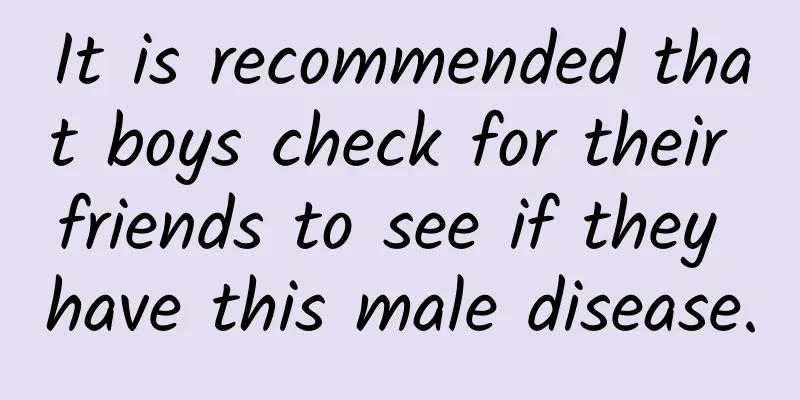Does nebulization harm the lungs? What should I do if my child doesn’t want nebulization?

|
This is the 4858th article of Da Yi Xiao Hu Spring is a season with changeable climate. First, active viruses and bacteria are easily spread among people, causing children to be infected with respiratory diseases. Secondly, the number of allergens such as pollen, catkins, and mites increases in spring, and children are prone to allergic reactions, such as coughing, sneezing, and even asthma. There are many ways to treat the above problems, one of which is nebulization. There are many different opinions about nebulization on the Internet, such as "it will hurt the lungs", "the hormones used in nebulization are not good for the body", "nebulization will cause dependence and have great side effects", etc., which scare many parents. So what is nebulization, and can it be used? What if the child does not want to nebulize? Today, let's talk about "nebulization" with parents. 1. What is atomization? Nebulizer inhalation therapy (hereinafter referred to as nebulization) refers to the use of professional equipment to finely convert drug solutions into tiny mist particles or microparticles. These drug particles are suspended in the air. They enter the respiratory tract and lungs with inhalation and deposit in the corresponding parts. In this way, nebulization can achieve rapid, effective and painless treatment effects. 2. Under what circumstances is atomization necessary? If a child is diagnosed with the following diseases, he or she can receive nebulization treatment under the doctor's orders and the guidance of the nurse, including asthma, acute laryngitis, upper respiratory tract infection, acute and chronic bronchitis, pneumonia, allergic rhinitis, other lung or recurrent respiratory diseases, etc. 3. Are there serious side effects of atomization? Will it cause dependence? Nebulization itself does not hurt the lungs or cause dependence. It acts directly on the respiratory tract and lungs, takes effect more quickly, and can exert a therapeutic effect more quickly. If nebulization is compared with oral or intravenous medication, the advantage of nebulization is that the drug can directly enter the respiratory tract (see the figure below), and its dosage is usually only one-tenth of other drug administration methods. This local medication method can better reduce the toxic side effects of the drug and reduce the adverse reactions that may be caused by systemic medication. Therefore, short-term conventional nebulization treatment will not have greater side effects than other treatments, and generally will not cause dependence. 4. Can I do atomization whenever I want? If nebulization is not used in a standardized manner, children may develop a certain degree of dependence on the drug or tolerance to the drug, thereby reducing the efficacy of the drug. Therefore, when using nebulization, you must strictly follow the doctor's instructions and ensure that you are fully aware of and follow the indications, dosage, and course of treatment requirements. By using nebulization in a reasonable and standardized manner, you can ensure the safety and effectiveness of treatment while reducing potential risks. 5. What should I do if my child is unwilling to undergo nebulization? A nebulization session takes a long time. Some children cannot sit still and may be unwilling to cooperate with the nebulization. Parents can try the following strategies to help their children accept and cooperate with the nebulization: (1) Communication and explanation It is recommended that parents communicate with their children in simple and easy-to-understand language first, carefully explain the purpose, process and effect of nebulization, and let the children understand the importance of nebulization for treatment. They can also watch the nebulization process through videos or tell some nebulization stories to alleviate the fear of the unknown. Children may be more likely to accept and cooperate with nebulization treatment. (2) Rewards and encouragement Giving children appropriate rewards and encouragement, such as small toys, stickers or praise after completing nebulization, can motivate them to participate more actively in the treatment. This method can make children feel that their efforts are recognized, so they are more willing to cooperate with nebulization treatment. (3) Combining therapy with games Through games such as role-playing and drawing, children can be made to feel that nebulization is a process in which viruses fight against each other, and they can be taught to help them defeat the "little monsters" in their bodies. (4) Distraction During the nebulization process, parents can use toys, stories or music to distract their children and make them feel more happy and relaxed during the treatment, which can reduce their fear and resistance to nebulization. (5) Adjust the atomization environment Make sure the nebulizer environment is comfortable and quiet, and adjust the appropriate temperature and humidity. This will allow children to receive treatment in a more comfortable environment and reduce their discomfort. (6) Gradual Adaptation For children who are receiving nebulization for the first time, parents can let them adapt to the process gradually. At the beginning, they can let the children touch the nebulizer briefly, and then gradually increase the time and intensity of nebulization until the children can fully accept it. (7) Seek professional help If the child's resistance is very strong, parents can actively seek help from a child expert or psychologist and let professionals provide targeted advice and methods to help parents better understand and deal with the child's condition, help the child overcome fear and anxiety, and better accept treatment. Author: Jiang Liyuan, Head Nurse, Department of Allergy and Immunology, Fujian Children's Hospital Graphic Design: Tang Yiran, Bachelor of Nursing |
<<: Exercise tips for cervical spondylosis
>>: Two or three things you should know about anesthesia
Recommend
How much higher is the body temperature of pregnant women than normal people?
There will be many changes in a woman's body ...
Normal episiotomy wound picture
The body of a woman with an episiotomy wound afte...
A lot of uterine poison came out
Beautiful women who have given birth said: Since ...
Don't be afraid of brown discharge at 12 weeks of pregnancy
There is a saying in folk customs that it is not ...
Insomnia is not a disease! You must know the truth about insomnia
Sleepless nights, tossing and turning, and being ...
Soft birth canal laceration
When the uterine contraction process develops too...
Can women eat taro during menstruation?
When it comes to fragrant taro, you may not be fa...
What if there is no grass carp in pickled fish? Can other fish be used if there is no grass carp in pickled fish?
We all know that there are many ways to eat fish,...
Pubic bone location map
The pubic bone is located mainly in the lower abd...
Can I drink coffee after having an abortion?
Abortion is the termination of pregnancy through ...
What are the harms of crossing your legs to women?
In daily life, many girls like to cross their leg...
When to add sugar when frying sugar color? Should we add rock sugar after the oil is hot or after the oil is cold?
We all know that frying sugar color is a common s...
How long does it take to get menstruation after medical abortion?
Many women who have an unexpected pregnancy do no...
When mental health meets sleep disorders: a "night battle" that needs to be seen
March 21 is World Sleep Day. This year's them...









